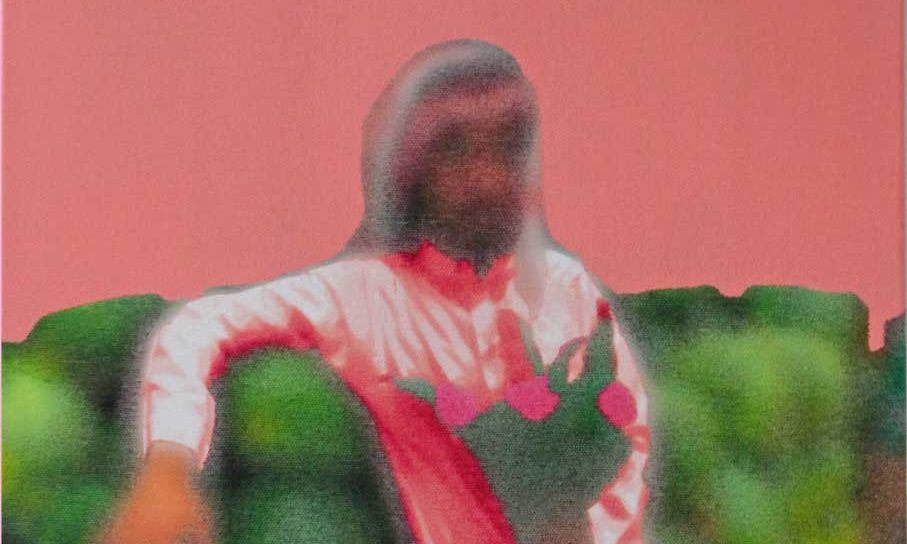Check out The Art Newspaper's guide to London Gallery Weekend 2022 for recommendations on the best exhibitions to see during the three-day event, top trends and commentary
London Gallery Weekend has added a new category—West London—and while it is far sparser in terms of significant galleries, spaces like Harlesden High Street add a distinctive quality to this year’s event. Of course, the West End of central London is where many of the most prominent and blue-chip galleries are located: in Mayfair, now including the steadily growing hub around the revitalised Cork Street; in the few choice galleries that remain in Fitzrovia, north of Oxford Street; and up as far as Edgware Road, where Lisson Gallery stubbornly continues to thrive. But while the galleries here are many of London’s most established spaces, they continue to offer surprises alongside the inevitable big-hitters.
Detail of Thomas Schütte's Doppelkopf (Blau) (2022)
Photo: Mareike Tocha. Courtesy of the artist and Frith Street Gallery, London
Thomas Schütte
Until 25 June, Frith Street Gallery, 17-18 Golden Square, W1F 9JJ
Frith Street Gallery is showing new and recent sculptures by the German artist Thomas Schütte, who has described his diverse work as reflecting “the grammar of character”. At the heart of the first floor is Schütte’s take on a mermaid: a vast bronze whose sturdiness has distinct evocations of Jacob Epstein. The latest fantastical figure by the German, it recalls his strange, lumpy dragons. Downstairs, meanwhile, are a number of Schütte’s works in glass, reflecting his ability to coax enigmatic forms from a wealth of materials.
Ghader Amer at Goodman Gallery
Photo: Jenny Gorman
Ghada Amer: My Body My Choice
Until 1 June, Goodman Gallery, 26 Cork Street, W1S 3ND
A first show in London for 20 years for New York-based, Cairo-born Ghada Amer. She shows new work including examples of her best-known series of paintings, in which stitched text, often by feminist critics, underpins arrangements of thread arranged in distinctive patterns or structures. Amer relates these pieces to the history of painting, and the male dominance of the medium—the works seduce with colour and then subvert with words. She also shows a “garden” of plants spelling out the exhibition’s title.
Hawazin Al-Otaibi’s Watermelon (2021)
Hawazin Al-Otaibi
Opens 14 May, Harlesden High Street, 57 High St, NW10 4NJ
This north-west London space shows works by artists of colour and is firmly embedded in its community, with events and workshops as well as a programme of artist residencies. For London Gallery Weekend, the venue is showing works from the Saudi artist Hawazin Al-Otaibi’s series Softboi. These paintings and mixed media works are full of bright colour, floral imagery and soft-focus romanticism (Al-Otaibi uses an airbrush to create her effects) but sardonically lampoon representations of masculinity in the Arab world.
Larry Bell's Deconstructed Cube SS (2021)
© Larry Bell. Courtesy of the artist and Hauser & Wirth. Photo: Jeff McLane
Larry Bell; Luchita Hurtado
13 May-30 July, Hauser & Wirth, 23 Savile Row, W1S 2ET
Two very different West Coast US artists are on show at Hauser & Wirth. Larry Bell was a linchpin of the Light and Space movement and shows new work in his trademark coated glass in distinctive colours, including monumental environments that prompt optical and spatial disruption. Luchita Hurtado, who died in 2020, has only recently been regarded as a major figure, and her Sky Skin series from the 1970s, based on experiences in Taos, New Mexico, pictures the skies with white clouds and feathers floating, as if seen from the ground, with mountain tops framing the image. The “skin” refers to the shape she gives the sky: it resembles stretched animal hides.
Nikita Kadan's The Model Falling Apart [Yermilov] (2017)
Courtesy of Galerie Poggi, Paris
The Territories of Abstraction
6-23 May, Galerie Jérôme Poggi, No. 9 Cork Street, W1S 3LL
Among the latest shows in Frieze’s Cork Street space is this group exhibition exploring landscape and its socio-political contexts. Among the artists are Kapwani Kiwanga, whose installation at this year’s Venice Biennale explores fracking and climate change through diaphanous textile paintings and enigmatic abstract sculptures, and Sophie Ristelhueber, whose extraordinary photographs have long explored the impact of conflict on bodies and territories, equating the scars on landscapes with those on flesh.
Melanie Manchot's Alpine Diskomiks (2020)
Melanie Manchot: Alpine Diskomiks
Until 25 June, Parafin, 18 Woodstock Street, W1C 2AL
Melanie Manchot’s installation Alpine Diskomiks (2020) creates a sublime landscape from 50 album covers featuring mountains, which she arranges in an unbroken range of peaks around the gallery walls. Beneath them are turntables that play the records, beginning with a single electronic tune before rising to a cacophony—an avalanche of sound, as the gallery puts it. Downstairs is Snowdance (2019) in which machines are filmed by a drone making patterns in the snow with movements based on traditional Alpine folk dances.
Amie Siegel: Bloodlines at Thomas Dane Gallery
© Amie Siegel. Courtesy the artist and Thomas Dane Gallery. Photo: Richard Ivey
Amie Siegel: Bloodlines
Until 23 July, Thomas Dane Gallery, 3 Duke Street, SW1Y 6BN
This two-part show reflects on the work of the 18th-century British painter George Stubbs. The beautifully shot film Bloodlines (2022) follows the journey of several paintings from the walls of aristocratic country houses into a public gallery, drawing connections between the subject matter of Stubbs’s works, the people who possess the paintings and the spaces they show them in today. Accompanying them is Cloude, Clot and Cloot (2022), a series of inkjet prints in which Siegel combines details of Stubbs’s pictures from the film into vaporous skyscapes.
The Art Newspaper is an official media partner of London Gallery Weekend

